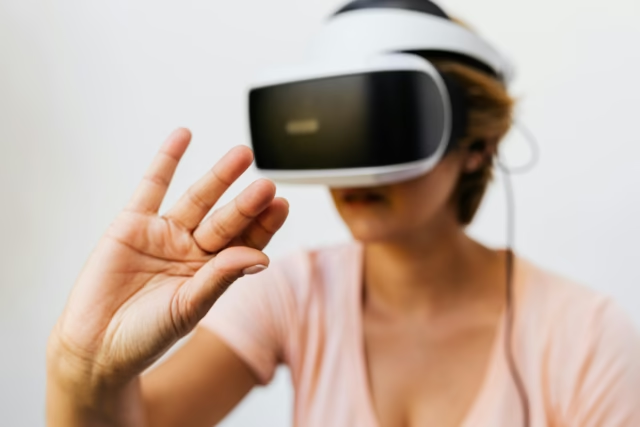Graphic artist William Fetter invented 3D modelling in the 1960s, and it has since evolved into what it is today after more than 60 years of continuous advancements. Computer graphics animations, architectural renderings, VR and AR, extensive CGI capabilities, etc.
These things play important roles in our lives. However, the world of video games is almost its primary use for 3D modelling, which we will talk about in this article. Expert 3D Cad modeling services that provide accurate, thorough, and creative designs for product development, engineering, and production.
Knowing the Fundamentals: Where to Begin?
You will need to spend weeks and months working on 3D models if you want to make your game concept a reality. Thousands of individual elements are needed to produce a decent 3D model for even a mid-range independent game. Just think of how difficult this process may be for AAA films!
Of course, if 3D modelling were limited to character models, it would be much simpler to work on game projects. But it’s all about the automobiles, the setting, the props, and more. We can identify seven primary categories of 3D modelling for game production, according to experts.
Recognising the Function of 3D Models in Realism
Fundamentally, a 3D art model is a three-dimensional electronic representation of an item. Models serve as the graphical building blocks for all of the environments, items, and characters you see on screen in video games. But realism depends on more than simply an object’s shape; it also depends on:
- Geometric precision and detail.
- Textures that resemble surfaces found in the actual world.
- Lighting that responds organically.
- Animations that seem realistic and flowing.
Put otherwise, a 3D model is merely the framework. When developers integrate models with products in order to texture, shaders, and physics, the true magic occurs.
Use the Proper Modelling Software First
You need the appropriate tools to make or modify a 3D model for your game. Common software consists of:
- Blender is a powerful modelling, sculpting, and rendering tool that is free and open-source.
- The industry standard for producing AAA video games and movies is Autodesk Maya.
- 3ds Max is widely used for detailed elements in games and architecture.
- ZBrush is ideal for intricate sculpting, particularly for characters.
Consider your process and budget when selecting software. Blender’s easy integration with Unity or Unreal Engine makes it a great choice for independent developers.
Using 3D Scanning to Create 3D Characters
Realistic models can be quickly created with 3D scanning, which records physical data for use in video games. It’s crucial for making complex objects that require a high level of accuracy or characters with realistic likenesses.
This method works well for animators as well as static models. The accurate information obtained from scans aids in creating realistic motions, particularly in face expressions. To blend in perfectly with a game’s look, raw scans typically need some refinement.
Constructing the 3D Model
Polycount & Geometry
Although they can impede performance, high-poly models capture incredible detail. Low-poly models may appear blocky, but they operate quickly.
The secret is to make a low-poly optimised model for multiplayer use after using a high-poly counterpart for baking details.
Proportion and Scale
Improper proportions instantly destroy realism. When feasible, use measures from the real world (for example, a chair ought to measure about one metre tall).
Level of Detail
Extreme intricacy is not necessary for every object. Simplify background items and concentrate on hero assets, such as primary people, weaponry, and vehicles.
Idea Generation
During the concept development phase, concepts are produced, the game’s concept is established, and its essential mechanics are described. Artists and designers can see the game world and items in three dimensions in order with the aid of 3D game modelling. In order to give visual direction, concepts are frequently drawn or made as simple 3D models for games.
Development of Assets
Here, intricate 3D models of the 3D game environment, props, in-game characters, among other items, are made. These 3D game assets are sculpted and designed by artists using 3D modelling tools. They use materials, textures, and occasionally movements to give the models life.
Texturing & UV Mapping
Without texturing, a model appears lifeless and flat. Texturing is the process of encircling your 3D object with a 2D image.
- Unwrapping the model in three dimensions to ensure a 2D texture fits properly is known as UV mapping.
- Textures: Use materials that mimic surfaces, such as fabric, metal, wood, or skin.
- Physically Based Rendering (PBR) Workflow: PBR textures are used in contemporary games to provide realism. These consist of:
- Map of Albedo (base colour).
- Fake surface detail without additional geometry is called a normal map.
- Map of Roughness (manages shininess).
- Reflective surfaces are defined by the Metalness Map.
One of the quickest ways to give a model a realistic feel is to use high-resolution, PBR-based textures.
Final Words
The entire pipeline, modelling, texturing, modelling, shading, rigging, animation, illumination, and optimisation—must be used in order to create realistic gaming graphics employing 3D models. Every step adds to the appearance of reality.






